Software for Embedded Vision

SWIR Vision Systems in Agricultural Production
This blog post was originally published at Basler’s website. It is reprinted here with the permission of Basler. Improved produce inspection through short-wave infrared light Ensuring the quality of fruits and vegetables such as apples or potatoes is crucial to meet market standards and consumer expectations. Traditional inspection methods are often based only on visual
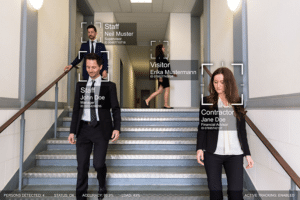
Qualcomm Dragonwing Intelligent Video Suite Modernizes Video Management with Generative AI at Its Core
This blog post was originally published at Qualcomm’s website. It is reprinted here with the permission of Qualcomm. Video cameras generate a lot of data. Companies that use a video management system (VMS) are left wanting to get more value out of all the video data they generate, enabling them to take the actions that

Rockets to Retail: Intel Core Ultra Delivers Edge AI for Video Management
At Intel Vision, Network Optix debuts natural language prompt prototype to redefine video management, offering industries faster AI-driven insights and efficiency. On the surface, aerospace manufacturers, shopping malls, universities, police departments and automakers might not have a lot in common. But they each collectively use and manage hundreds to thousands of video cameras across their

LLM Benchmarking: Fundamental Concepts
This article was originally published at NVIDIA’s website. It is reprinted here with the permission of NVIDIA. The past few years have witnessed the rise in popularity of generative AI and large language models (LLMs), as part of a broad AI revolution. As LLM-based applications are rolled out across enterprises, there is a need to
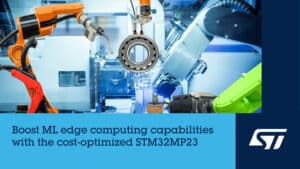
STMicroelectronics Releases STM32MP23 Microprocessors Featured for Performance and Economy and Extends Support for OpenSTLinux Releases
Focused feature set with AI acceleration and cyber protection for industrial and IoT applications Geneva, Switzerland, April 7, 2025 — STMicroelectronics has announced mass-market availability of new STM32MP23 general-purpose microprocessors (MPUs), combining high-temperature operation up to 125°C with the speed and efficiency of dual Arm® Cortex®-A35 cores, for superior performance and ruggedness in industrial and

Enterprise AI: Insights from Industry Leaders
This blog post was originally published at Tryolabs’ website. It is reprinted here with the permission of Tryolabs. The potential of AI continues to captivate businesses, yet the reality of implementation often proves challenging. In our latest event, we explored the complex landscape of enterprise AI Adoption. Our expert panel cut through the hype, offering

Visual Intelligence: Foundation Models + Satellite Analytics for Deforestation (Part 2)
This blog post was originally published at Tenyks’ website. It is reprinted here with the permission of Tenyks. In Part 2, we explore how Foundation Models can be leveraged to track deforestation patterns. Building upon the insights from our Sentinel-2 pipeline and Central Balkan case study, we dive into the revolution that foundation models have

High-performance AI In House: Qualcomm Dragonwing AI On-prem Appliance Solution and Qualcomm AI Inference Suite
This blog post was originally published at Qualcomm’s website. It is reprinted here with the permission of Qualcomm. The Qualcomm Dragonwing AI On-Prem Appliance Solution pairs with the software and services in the Qualcomm AI Inference Suite for AI inference that spans from near-edge to cloud. Together, they allow your small-to-medium business, enterprise or industrial

Qualcomm Expands Generative AI Capabilities With Acquisition of VinAI Division
Highlights: Acquisition will strengthen Qualcomm’s generative AI research and development capabilities and expedite the creation of advanced AI solutions for products like smartphones, PCs, software-defined vehicles, and more Dr. Hung Bui, VinAI’s founder and CEO, will join Qualcomm Apr 1, 2025 – SAN DIEGO & HANOI, VIETNAM – Qualcomm today announced the acquisition of MovianAI Artificial

DeepSeek: Stop the Panic
DeepSeek is a precursor of many more disruptors coming in the AI world. Its importance may be overblown compared with what comes next. What’s at stake: DeepSeek nearly sank Nvidia and other AI model players. Except DeepSeek itself is barely known by anyone, its true story still a mystery, and the likely impact on the
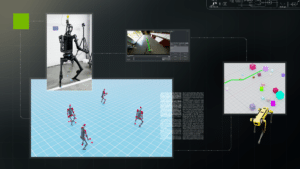
R²D²: Advancing Robot Mobility and Whole-body Control with Novel Workflows and AI Foundation Models from NVIDIA Research
This blog post was originally published at NVIDIA’s website. It is reprinted here with the permission of NVIDIA. Welcome to the first edition of the NVIDIA Robotics Research and Development Digest (R2D2). This technical blog series will give developers and researchers deeper insight and access to the latest physical AI and robotics research breakthroughs across

Sony Semiconductor Demonstration of AITRIOS Vision AI at the Extreme Edge Made Simple
Armaghan Ebrahimi, Senior Technical Product Manager, and Zachary Li, Product and Business Development Manager, both of Sony Semiconductor, demonstrates the company’s latest edge AI and vision technologies and products at the March 2025 Edge AI and Vision Alliance Forum. Specifically, Ebrahimi and Li demonstration the Raspberry Pi AI Camera, powered by Sony’s IMX500 smart sensor

LLMOps Unpacked: The Operational Complexities of LLMs
This blog post was originally published at Tryolabs’ website. It is reprinted here with the permission of Tryolabs. Incorporating a Large Language Model (LLM) into a commercial product is a complex endeavor, far beyond the simplicity of prototyping. As Machine Learning and Generative AI (GenAI) evolve, so does the need for specialized operational practices, leading

Visual Intelligence: Foundation Models + Satellite Analytics for Deforestation (Part 1)
This blog post was originally published at Tenyks’ website. It is reprinted here with the permission of Tenyks. Satellite imagery has revolutionized how we monitor Earth’s forests, offering unprecedented insights into deforestation patterns. In this two-part series, we explore both traditional and cutting-edge approaches to forest monitoring, using Bulgaria’s Central Balkan National Park as our
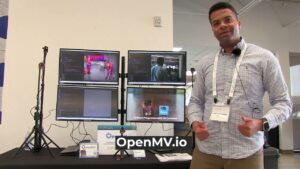
OpenMV Demonstration of Its New N6 and AE3 Low Power Python Programmable AI Cameras and Other Products
Kwabena Agyeman, President and Co-founder of OpenMV, demonstrates the company’s latest edge AI and vision technologies and products at the March 2025 Edge AI and Vision Alliance Forum. Specifically, Agyeman demonstrates the company’s new N6 and AE3 low power Python programmable AI cameras, along with the FLIR BOSON thermal camera and Prophesee GENX320 event camera.

RGo Robotics Implements Vision-based Perception Engine on Qualcomm SoCs for Robotics Market
This blog post was originally published at Qualcomm’s website. It is reprinted here with the permission of Qualcomm. Mobile robotics developers equip their machines to behave autonomously in the real world by generating facility maps, localizing within them and understanding the geometry of their surroundings. Machines like autonomous mobile robots (AMR), automated guided vehicles (AGV)
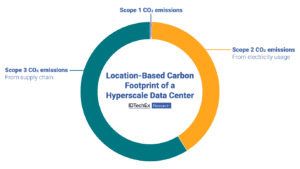
Key Insights from Data Centre World 2025: Sustainability and AI
Scope 2 power-based emissions and Scope 3 supply chain emissions make the biggest contribution to the data center’s carbon footprint. IDTechEx’s Sustainability for Data Centers report explores which technologies can reduce these emissions. Major data center players converged in London, UK, in the middle of March for the 2025 iteration of Data Centre World. Co-located

Explaining Tokens — The Language and Currency of AI
This blog post was originally published at NVIDIA’s website. It is reprinted here with the permission of NVIDIA. Under the hood of every AI application are algorithms that churn through data in their own language, one based on a vocabulary of tokens. Tokens are tiny units of data that come from breaking down bigger chunks

